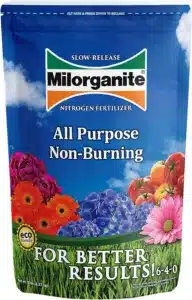“Ever peered out your window and wondered, ‘Why does my lawn look so Bad?’ You’re not alone. A patchy, discolored, or weed-riddled lawn can be the bane of homeowners. In this article, we dive deep into the root causes (pun intended!) of a less-than-stellar lawn and how to breathe new life into it. Are you making common mistakes? Could there be hidden culprits damaging your turf? Get ready to discover transformative solutions that promise to turn your outdoor space from bleak to chic. The clock is ticking on a mediocre lawn; let’s unravel the mystery and reclaim your lush, green paradise!”
Why Does My Lawn Look So Bad?
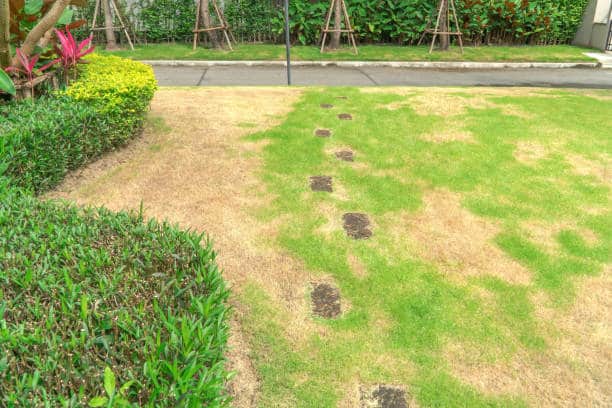
If your lawn looks bad, it can be due to a variety of reasons, often related to maintenance, pests, disease, soil health, and environmental factors. Here’s a breakdown of some of the most common causes:
- Improper Watering: Both over-watering and under-watering can stress your lawn. Grass roots can rot with too much water, while too little water can cause them to dry up.
- Mowing Issues: Mowing the grass too short can stress it and make it more susceptible to weeds. Dull mower blades can tear grass, causing a ragged appearance.
- Poor Soil Quality: If your soil is too compacted, lacks nutrients, or has poor pH levels, it can impact grass growth. A soil test can help identify any deficiencies.
- Thatch Buildup: Thatch is a layer of organic material between the soil and grass blades. A thick thatch layer can prevent water, nutrients, and air from reaching the soil.
- Lawn Pests: Grubs, chinch bugs, and other pests can damage your lawn. Grubs, for example, eat grass roots, causing the turf to brown and pull up easily.
- Fungal Diseases: Fungi like brown patch, dollar spot, and rust can take a toll on your lawn. These typically manifest as discolored patches or spots.
- Weeds: Competitive weeds can crowd out grass and take up space, water, and nutrients.
- Incorrect Fertilization: Over-fertilizing or using the wrong type of fertilizer can burn the grass and promote weed growth.
- Heavy Traffic: Constant foot or vehicle traffic can compact the soil and damage the grass, leading to bare spots.
- Environmental Stress: Excessive shade, heat, or cold can adversely affect certain grass types.
Identifying the specific reason(s) why your lawn looks bad is the first step to addressing the issue. Once you understand the underlying cause, you can take the necessary steps to restore your lawn to its former glory.
What Is The Cheapest Way To Replace Grass?
Ahoy there, budget-conscious green-thumb aspirant! Ready to trade in that patchy excuse of a lawn without burning a hole in your wallet? Grab your captain’s hat, and let’s set sail on the thrifty seas of grass replacement! 🏴☠️
- Seed, not Sod!: Forget the fancy-pants sod! Buy grass seed, scatter generously, and watch the green magic unfold. It might test your patience, but your wallet will thank you. And who knew watching grass grow could be an actual pastime? 🌱
- DIY Soil Aeration: Instead of hiring a professional aerator, put on your spikiest shoes and stomp around like you’re auditioning for a tap dance. Your lawn gets much-needed aeration, and you get a quirky workout. Win-win! 💃
- Mulch Mow: Instead of bagging grass clippings, mulch mow them. They’ll decompose and return vital nutrients to the soil, making your lawn healthier without forking out for expensive fertilizers.
- Go Native: Consider planting native ground covers that are naturally adapted to your region. They require less maintenance and water, and they might even attract local wildlife. Be the talk of the town as the eco-friendly neighbor with the quirky lawn! 🍀
- Freecycle & Bargains: Keep an eye on community boards, local listings, or even freecycle networks. Some folks might be giving away excess seeds or plants. One person’s excess is another’s treasure trove!
- Barter & Trade: Got a skill? Trade it! Maybe your neighbor has a green thumb but a leaky faucet. You fix the leak; they help with your lawn. Embrace the age-old barter system!
Remember, the grass might seem greener on the other side, but with a pinch of patience, a dash of DIY spirit, and a sprinkle of humor, your lawn can be the envy of the block without emptying your treasure chest! 🌿🏴☠️🪙
How Do You Deal With A Bumpy Lawn?
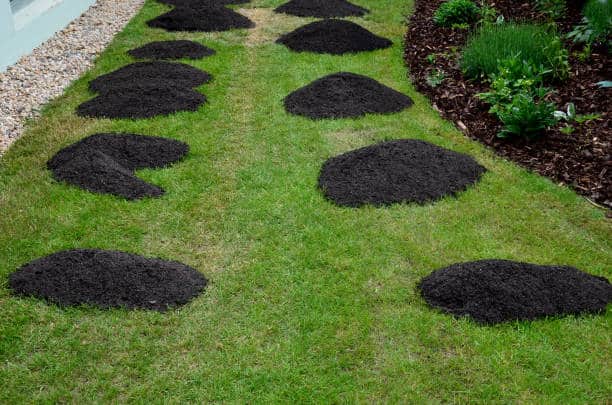
Ah, the bumpy lawn conundrum! It’s like nature’s own obstacle course right in your backyard. Fear not, for flattening that miniature mountain range isn’t as daunting as it seems. Here’s your game plan to turn that bumpy roller-coaster into a serene plain:
Lawn Rolling: Rent or buy a lawn roller. Fill it with water (or sand) for weight and roll it across your lawn. This can press down minor bumps. Remember: it’s best done in spring when the soil is moist but not soggy.
Topdressing: Mix equal parts sand, loam, and peat to create a topdressing. Spread a thin layer over your lawn to fill in the low spots. This method is ideal for lawns with slight unevenness. It’s like putting foundation on your lawn’s face – smooth and flawless!
Leveling Rake: For those who don’t know, a leveling rake (or lute) is your best friend for evening out small imperfections. Use it post-topdressing to spread the mix evenly.
Master Your Terrain: With Rocklin™ Lawn Leveling Rake, achieve professional-level soil precision in every corner of your garden.
Effortless Elegance: 30″ x 10″ ground plate ensures wide coverage, transforming uneven grounds into picturesque landscapes in mere minutes.
Unmatched Durability: Crafted with premium stainless steel, our Levelawn Tool promises years of rust-free, steadfast service.
Reach Further, Strain Less: Boasting a 78” extra-long handle, comfortably cover larger areas without the back-breaking effort.
Rocklin’s Guarantee: Designed for both novice gardeners and seasoned landscapers—step up your gardening game with unparalleled ease and finesse.
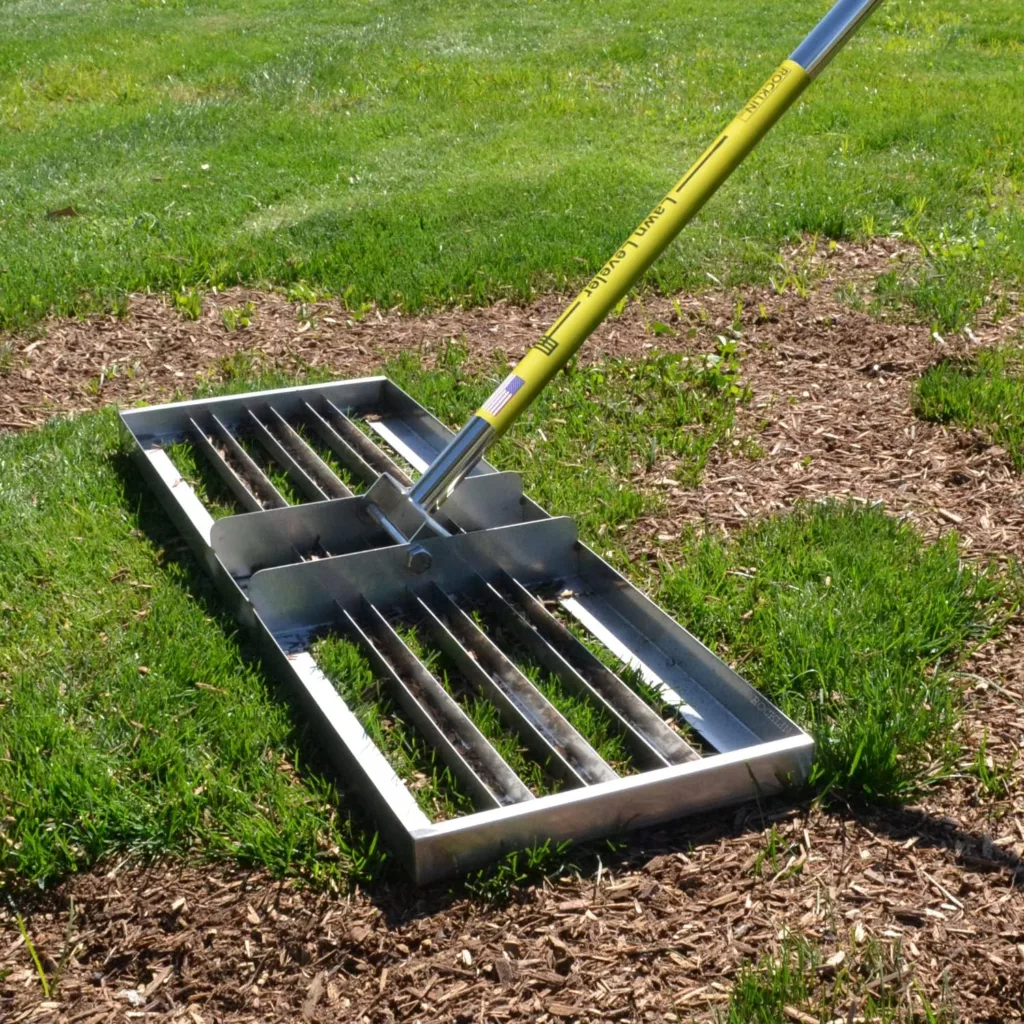
Addressing Soil Compaction: If your lawn feels as hard as a dance floor, aerate it! This process involves making small holes in the lawn to allow air, water, and nutrients to penetrate. Dance moves optional.
Dealing with Earthworm Casts: Earthworms are great for the soil, but they can leave little mounds (casts) behind. Simply sweep or brush these casts away on a dry day.
For the Bigger Bumps: Sometimes, the unevenness is due to objects like rocks or tree roots. In such cases, you might have to dig up the problem areas, remove the obstacles, fill with soil, and reseed.
Avoid Heavy Traffic: Encourage family, pets, and alien visitors to vary their walking paths. Regular traffic in the same area compacts the soil, making it uneven.
Regular Maintenance: Regular mowing, watering, and fertilizing will ensure a healthy lawn, which, in turn, is less prone to developing bumps and hollows.
Consult the Pros: If you’ve tried everything and your lawn still resembles a mini-golf course, it might be time to call in the professionals.
With a little patience, elbow grease, and these strategies in your arsenal, you’re well on your way to turning that bumpy green beast into the smooth lawn of your dreams. Just remember: Rome wasn’t built in a day, and neither is a perfect lawn!
How Do I Make My Grass Super Dark Green?
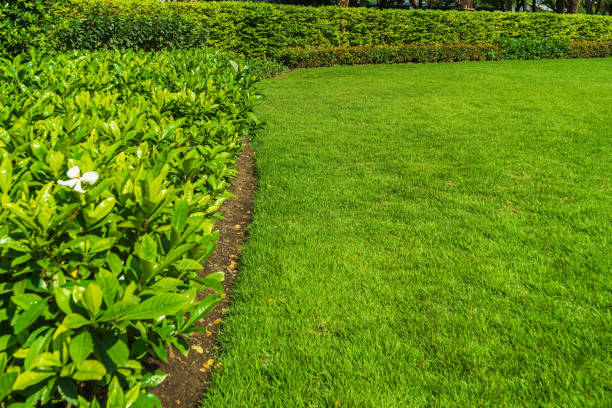
The quest for the emerald lawn of legends! Everyone covets that lush, dark green carpet, reminiscent of the magical landscapes in fairy tales. Ready to sprinkle some magic on your lawn? Here are the secrets:
- Right Grass Type: Certain grass types naturally have a darker hue. Consider Kentucky bluegrass, perennial ryegrass, or tall fescue if they’re suitable for your climate. If you’re in for a change, these might be your ticket to the enchanted forest look!
- Balanced Fertilization: Grass loves nitrogen for that green, green look. But remember, it’s a dinner, not a buffet! Overfeeding can burn your lawn. Use a slow-release granular fertilizer, and always follow the label instructions.
- Iron Boost: Think of iron as the spinach to your lawn’s Popeye. An occasional iron supplement can give your grass that extra dark green boost. Liquid iron (often called chelated iron) can be sprayed for a quicker green-up.
- Mowing: Keep your mower blades sharp and never cut more than 1/3 of the grass height at once. Taller grass blades have deeper green color. Plus, longer grass shades out potential weeds. Win-win!
- Deep, Infrequent Watering: Train your grass roots to go deeper by watering deeply and less often. This encourages stronger roots and a more vibrant green top.
- pH Check: Grass thrives in slightly acidic soil (pH 6 to 7.5). If your soil’s pH is off, your grass might not be accessing all the nutrients it needs. A soil test can reveal your pH mysteries.
- Regular Aeration: Aerating your lawn ensures that air, water, and nutrients penetrate the grassroots. It’s like giving your lawn a rejuvenating spa day!
- Mulch, Don’t Bag: When mowing, leave the clippings on the lawn. They’ll decompose, returning nitrogen to the soil. Your grass will thank you with a lush, dark green hue. Just remember this will increase eventual thatching in your lawn, which will then need to be vertimowed.
- Manage Pests and Diseases: Keep an eye out for any signs of lawn stress or disease. A healthy lawn is naturally greener.
- Limit Traffic: Those well-trodden paths can stress your lawn and make it look worn out. Encourage people (and pets) to mix up their routes.
- Stay Consistent: Like any good fairy tale, consistency is key. Regular care and maintenance will ensure your lawn stays as green as the other side (or greener!).
May your lawn soon become the talk of the realm, a majestic sea of green that leaves neighbors spellbound! 🌱🪄🌟
How Can I Make My Grass Look Thicker?
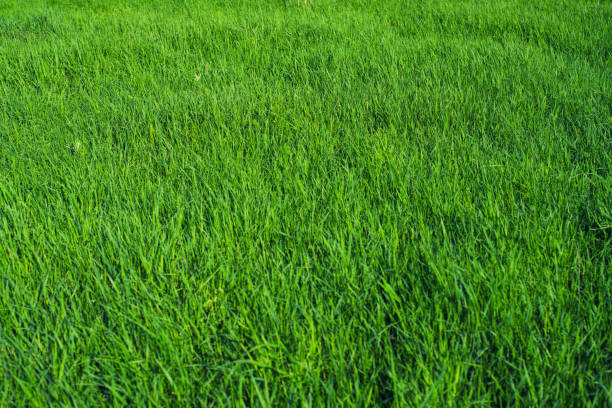
The age-old quest for the luscious, thick lawn that makes barefoot strolls feel like walks on plush green carpet! Ready to turn your grass from a thin, wispy mess into a thick, verdant jungle? Buckle up; here’s your thick-lawn action plan:
- Overseeding: Think of this as giving your lawn a hair transplant. Spread grass seeds over your existing lawn to fill in thin spots and introduce a more resilient type of grass.
- Water Right: Water deeply and infrequently. This encourages grass roots to grow deeper, leading to a stronger and thicker lawn.
- Fertilize, but Wisely: Regularly feed your lawn with a balanced fertilizer to provide essential nutrients. Slow-release fertilizers work wonders in encouraging steady growth without overwhelming the grass.
- Soil Testing: Make sure your soil has the right pH and nutrient balance. A soil test kit from a garden center can reveal what’s missing, and you can adjust accordingly.
- Regular Aeration: Aeration prevents soil compaction and allows air, water, and nutrients to penetrate, promoting a thick and healthy growth.
- Dethatching: Too much thatch (a layer of dead grass and roots) can prevent water, nutrients, and air from reaching the soil. Remove excess thatch using a dethatching rake or machine.
- Mow High and Regularly: Taller grass promotes deeper root growth. Ensure your mower’s blades are sharp to prevent tearing the grass, which can make it look thin and ragged.
- Pest and Weed Control: Invasions from weeds or pests can compromise the thickness of your lawn. Use both preventative and responsive treatments to keep these invaders at bay.
- Choose the Right Grass: Some grass types naturally grow thicker than others. If you’re starting from scratch or considering a change, research grass types that are known for thickness and are suitable for your region.
- Limit Lawn Traffic: High traffic areas can become compacted and thin out. Consider adding stepping stones or pathways in frequently walked areas.
- Consistency is Key: A thick lawn isn’t an overnight achievement. Regular care, patience, and persistence will eventually give you the lush lawn of your dreams.
Soon, with a bit of TLC, your lawn will have the thickness of a luxury carpet, making every step a joy and turning every neighbor green with envy! 🌱👣
What’s The Best Fertilizer To Make Your Grass Green?
Milorganite Slow Release Nitrogen Lawn Fertilizer has been a beloved choice for many a lawn enthusiast over the years. Here’s a little breakdown of why it’s often considered a great option for achieving that enviable green lawn:
- Slow Release Nitrogen: One of the biggest stars of Milorganite is its slow-release nitrogen. This means it feeds your lawn gradually over a longer period, ensuring sustained growth and a steady green-up, rather than a sudden burst that fades quickly.
- Organic Composition: Derived from heat-dried microbes, Milorganite is an organic fertilizer. Not only is this beneficial for the environment, but it also improves the soil structure over time, promoting a healthier, greener lawn.
- Iron Boost: Milorganite contains iron, which is a fantastic ingredient for that deep green color many homeowners covet. The bonus? This type of iron application typically doesn’t stain concrete, unlike some iron-rich liquid treatments.
- No Burn: Because of its slow-release nature and organic composition, there’s minimal risk of burning your lawn with Milorganite, even if you accidentally apply a bit too much. That’s a relief for those of us who are a tad heavy-handed!
- Additional Nutrients: Beyond nitrogen, Milorganite also supplies other essential nutrients to your lawn, thanks to its varied organic material composition.
- Pleasant Aroma: Well, “pleasant” might be subjective. Some people find the distinct smell of Milorganite off-putting, while others think it’s the very aroma of garden success!
A few pointers for using Milorganite:
- Follow the Instructions: Always adhere to the recommended application rates on the bag.
- Application Frequency: It’s typically recommended to apply Milorganite 4 times a year: Memorial Day, 4th of July, Labor Day, and right around Thanksgiving.
- Watering After Application: Watering isn’t immediately necessary after application, but if you’re in a dry spell, a little hydration will help speed up the process.
With the right application and a bit of lawn TLC, Milorganite can certainly help you achieve that lush, green carpet of your dreams! Happy greening! 🌱🍀🌿
- Nature’s Best, Bottled: Milorganite delivers all-purpose, eco-friendly nourishment for vibrant, thriving landscapes.
- Consistent Greening: With slow-release nitrogen, ensure your lawn remains lush and green longer without the frequent reapplications.
- Salt-Free Superiority: Say goodbye to soil damage and hello to a safer, salt-free 6-4-0 formulation.
- Sustainably Sourced: Feel good about every application, knowing Milorganite’s eco-conscious roots champion environmental responsibility.
How Often Should You Aerate Your Lawn?
Aerating your lawn is like giving it a breath of fresh air. But just like many things in gardening and lawn care, there’s a rhythm to it. The frequency of aeration depends on several factors, including the type of grass you have, soil composition, and how much use (or abuse) your lawn endures. Here’s a guideline to help you decide:
- Type of Grass:
- Cool-Season Grasses (like Kentucky bluegrass, fescue, and ryegrass): It’s best to aerate in the early spring or fall when the grass is in its peak growing season. Once a year is usually enough.
- Warm-Season Grasses (like Bermuda, St. Augustine, and Zoysia): Late spring to early summer is the ideal time, as these grasses start growing actively in warmer weather. Aerate once a year.
- Soil Composition:
- Clay Soils: If you have dense clay soil, it can become compacted more easily. This might require you to aerate twice a year: once in spring and once in the fall.
- Sandy Soils: These are typically less prone to compaction. Aeration once a year, or even once every two years, might suffice.
- Usage:
- High Traffic: If your lawn sees a lot of action, be it from children playing, frequent gatherings, or perhaps a family dog constantly running around, then it’s more prone to compaction. This might necessitate more frequent aeration.
- Newly Established or Renovated Lawns: If your lawn has been freshly seeded or sodded in the past year, hold off on aerating. Give the grass some time to establish a strong root system.
- Thatch: If your lawn has a heavy thatch layer (greater than half an inch), it’s a good sign that you need to aerate. This helps break down the thatch layer and reintroduces it to the soil.
- Health of the Lawn: If your lawn looks stressed, has dry spots even after watering, or water pools on the surface, it’s signaling compaction and poor water infiltration. Aeration can help rectify these issues.
- Consistency: Regardless of how often you aerate, try to be consistent. Regular aeration will ensure healthy soil and grass over the long term.
Always remember that immediately after aeration is a fantastic time to overseed and fertilize, as the nutrients and seeds will have direct access to the soil. Happy aerating! 🌱🌬️🌿
Why Does My Lawn Look So Bad Wrap Up
Understanding and addressing the reasons behind a lackluster lawn is a journey many homeowners embark upon.
Throughout this article, we’ve unraveled the mysteries behind those brown patches, the invasion of unwelcome weeds, and the puzzling thinness that turns a lawn from fab to drab.
From the importance of regular maintenance, the magic of proper fertilization, to the art of lawn aeration, we’ve covered the tools you need to rejuvenate your green haven. Our lawns, after all, are reflections of our dedication and care—mirroring our efforts with every blade of grass.
As you step out, trowel or seed bag in hand, remember that every garden, no matter how challenged, holds the potential for beauty and splendor. With the knowledge you now possess, may your lawn soon be the verdant pride of the neighborhood!
Check Our Landscape Projects On Facebook
Hi there, I’m Mark Apletree, a gardening enthusiast with a passion for gardening, and gardening tools. I’ll be your go-to guide for all things related to gardening. The purpose of this website is to assist you in selecting the most suitable garden gear that meets your specific requirements.
See All Posts

